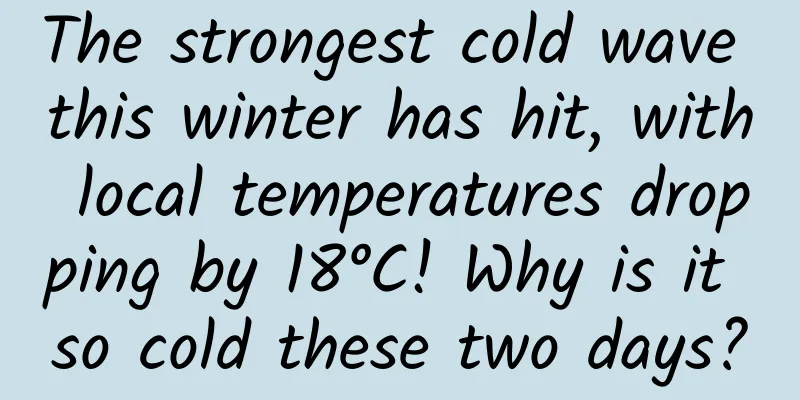Economy in physics: What is the principle of least action?

|
Today I will tell you about an economic principle in physics - the principle of least action. This economic principle is also reflected in the wisdom of our ancestors, which is the sentence in the Tao Te Ching: "The great way is very easy, but people prefer shortcuts." We have to start with optical phenomena. In ancient Greece, Euclid summarized the law of mirror reflection, which states that the angle of incidence equals the angle of reflection. Later, Herod of Alexandria realized that the reason why a light beam behaves this way is that it wants to take the shortest path. Using today's mathematics, if we write out the function of the path length starting from point A and passing through a reflection point to reach point B, the condition under which the differential (zero) of the path length with respect to the coordinates of the incident point can be obtained is... This is what we call the law of reflection. Later, people paid attention to the refraction of light. If we start from point A in one medium, pass through the incident point and reach point B in another medium, and write out the path length function, and find its differential with respect to the coordinates of the incident point (zero), we can get the condition for the shortest path, which is. This is the so-called law of refraction. We can see that the law of refraction and the law of reflection can be unified into a principle of the shortest path, so we can think that it may have some kind of universality. Now let me tell you an example that has nothing to do with optics. Let us imagine that a little monk comes out of the temple, carries a bucket to the river to fetch water, and then uses it to water the vegetable garden. The mass (weight) of the bucket is different on the two paths. The path with this mass (weight) as the weight is the sum of the distances from point A to the river and from the river to the vegetable garden. If we find its shortest condition, we can get a formula. This is a mixture of the laws of reflection and refraction. This tells us that the law of the shortest path may be universal. Now let's look at mechanical problems. In the 17th century, Galileo had already given the law of falling bodies, and Newton had also given Newton's second law. However, for many mechanical problems, we still need to consider them specifically. For example, let's consider a small ball falling from point A to point B. What is the shortest path it takes? We can also examine a statics problem. What is the configuration of a chain hanging at two points when it is in equilibrium? Regarding the hanging chain, that is, the catenary problem, its economic principle is that we believe that its overall potential energy is the smallest in such a configuration. In other words, we can write the potential energy as an integral of the shape of the chain, and find the condition for its minimum value, and we can get the shape of the catenary. The picture comes from Tuchong.com This introduces a very complex problem, which is about the function of the function. How to find the extreme value of the function of the function is actually quite difficult. In 1696, Johann Bernoulli sent a call to heroes all over the world to solve this rappelling line problem. His brother, Jacob Bernoulli, developed a mathematical method to find the extreme value of the function of the function, which is a development of the differential method - the calculus of variations. So far, we have seen that, whether it is about such motion or static configuration, we are looking for the minimum condition of the integral of a function about the configuration or path. We may not know the form of such a function. If its integral is to be an extreme value, it should satisfy this famous equation, which is the Euler-Lagrange equation. Of course, things are not that simple, sometimes it has to satisfy other conditions. For example, for the catenary, it is required to satisfy the condition that the length of the catenary is constant. Anyway, now everyone realizes that our physical laws may satisfy a certain economic principle, which is to minimize a certain quantity. In 1741-1746, French scientist Maupertuis concluded that all motions must satisfy a law, which is the principle of least action. Since it satisfies the principle of least action, what does this action look like? He gave an example, saying that the action, or effort, of a free particle should be equal to the mass multiplied by its speed, multiplied by its displacement, integrated over the entire path. Is this form of action reasonable or not? Well, we only need to look at a fat man running, and you will understand how reasonable it is. When a fat man runs, his effort is of course proportional to his weight, proportional to his speed, multiplied by his displacement, integrated over the entire path. Of course, this is a simple case. If we examine the motion of particles in a potential field, British scientist Hamilton concluded that the entire action should be the integral of a Lagrangian function over time, and the Lagrangian function is the kinetic energy of a particle minus its potential energy. This principle of minimum action has a very profound significance. We can extend it from particles to fields, that is, use it to deal with problems of electromagnetic fields and gravitational fields. For electromagnetic phenomena, we only need to write out the Lagrangian of the electromagnetic field and use the principle of least action to get its equation; for gravitational problems, if we write out the Lagrangian of the gravitational field, we can also get the equation of the gravitational field through the principle of least action. From the requirements of the principle of least action on the Lagrangian, that is, the Euler-Lagrange equation, it is obvious that if the Lagrangian is not an explicit function of the coordinates, a conservation law can be obtained. In 1918, the famous female mathematician Emmy Noether thought that if this Lagrangian has many hidden symmetries, can we construct the corresponding conservation laws? So there was this famous article "The Invariant Variational Principle", and human society has had real theoretical physics since then. The principle of least action was further developed. We can see that the principle of least action is to construct the Lagrangian from the interaction, and derive its conservation law from the Lagrangian. Can we also do the opposite, from the conservation law of some physical phenomena obtained from the experiment to its symmetry, so as to construct the corresponding Lagrangian, and then use the principle of least action to study this interaction? This is the stage of symmetry determining interaction in the later stage of theoretical physics. As for what is the principle of least action? I can summarize it as saying that "everything in this world is extreme". Of course, the principle of least action is a very profound subject, and it is difficult to explain it clearly in such a short article. Finally, I would like to remind you of a word in Western languages: comprehend. In English, it is comprehendre, and in French, it may be comprehendre, but its literal meaning is "to take together". What does it mean? If I want you to bring me ten footballs, you may not be able to do it; but if I give you a net bag, you put these balls together, and you can take them. The principle of least action is the principle that allows people to pick up a lot of knowledge at one go. It is a principle above principles. I hope that everyone can pay more attention to the content of the principle of least action in future physics learning. This article is a work supported by Science Popularization China Starry Sky Project Author: Cao Zexian Reviewed by: Luo Huiqian Produced by: China Association for Science and Technology Department of Science Popularization Producer: China Science and Technology Press Co., Ltd., Beijing Zhongke Xinghe Culture Media Co., Ltd. |
<<: How capable is the “palm-sized” Black Bumblebee?
>>: "Food Safety Guide" Series | Are apple seeds poisonous? Don't chew the seeds of these fruits
Recommend
91 Ten Articles: Tokyo Motor Show announced cancellation, Tesla has caused 175 deaths in eight years
1. Tesla Vice President Tao Lin recently admitted...
From these 4 traits, you can see if you are a high-potential designer!
I have been working with some newcomers recently ...
OPPO R5, the world's thinnest 5-inch OPPO R5, is 4.85mm thick and is the best choice for iPad Air 2
Thinness has always been a dimension that smartph...
APP forces facial recognition? Account cannot be cancelled? The Cyberspace Administration of China takes action
At present, various APPs on mobile phones have gr...
Internet in 2016: From traffic to productivity
Faced with the "abdication of the gods"...
100% Method to Create a Hot Short Video Account
In the era of attention economy, short videos hav...
The first ice shelf collapse occurred in the cold region of Antarctica, covering an area of 1,200 square kilometers. What happened?
1,200 square kilometers, how big is this area? It...
Activity operation review data indicators!
After each activity, it is necessary to review th...
Didi "Hua Xiaozhu" taxi product analysis report
Hua Xiaozhu is an app owned by Didi , known as th...
In addition to catering to Steve Jobs' aesthetic taste, can small-screen mobile phones really succeed?
About six years ago, when Samsung's first gen...
The physical dashboard is over. BMW shows off a new electronic dashboard
According to foreign media reports, it is not dif...
How to write a title with over 100,000 views? These 6 tips and 4 precautions are a must-read!
What kind of era is this? Everything is connected...
Using 0.2 grams of lunar soil, they discovered a major secret
When conducting the first experiment with lunar s...
What strange reactions will occur in the body before death? Can there really be a last moment of life?
Expert of this article: Zhang Yinming, PhD in For...
Do you also need to uninstall bundled apps on iOS?
[[142115]] The Apple Music streaming music servic...









